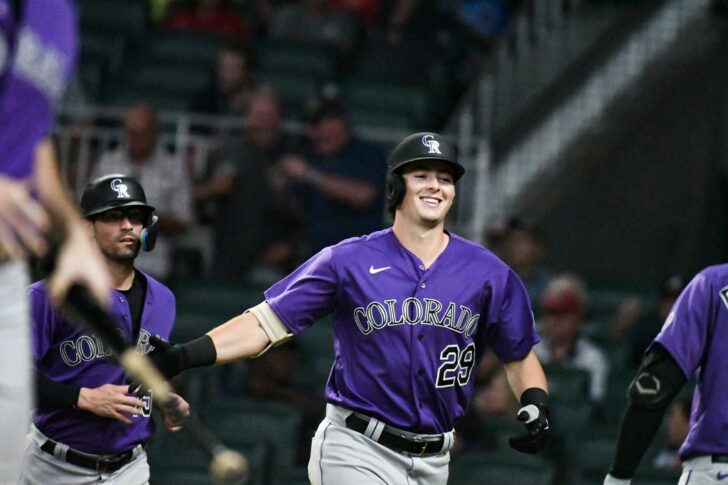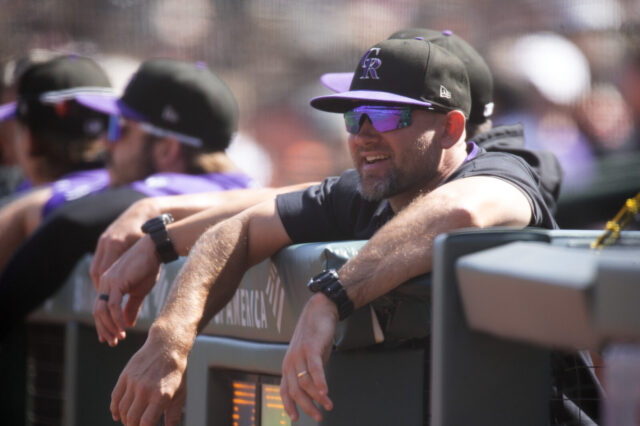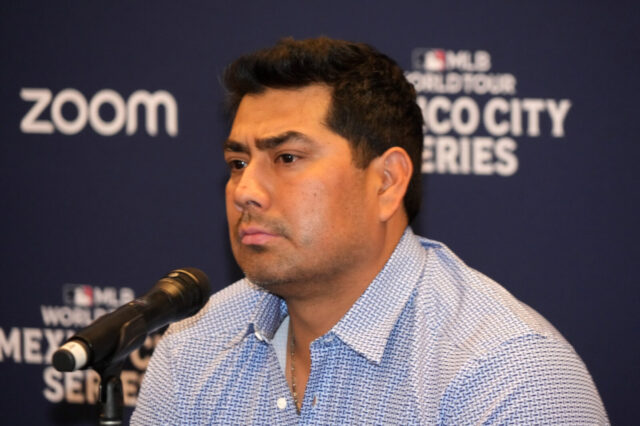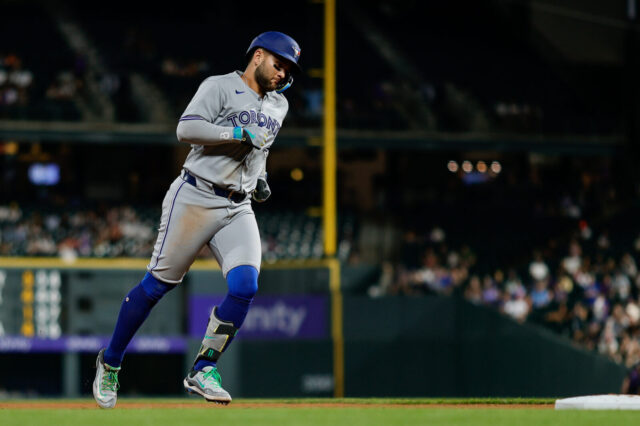For me, it was Chipper Jones.
For my mother, it was Mickey Mantle.
For Colorado Rockies first baseman and new rookie Michael Toglia, it was Mark Teixeira.
When you think about switch-hitting in baseball, usually one name comes to mind if not a pretty small group. And that’s because guys who hit from both sides of the plate have always been a rare breed.
The advantages to being able to face any pitcher from the opposite batter’s box are obvious which means that if it was easy, everyone would do it.
So, why doesn’t everyone do it? Cue Ron Washington in Moneyball, “Because it’s incredibly hard.”
But it’s also essentially the only approach that Toglia has known from his time in little league up through his MLB debut on August 30.
“I’ve been able to do it my entire life,” he told me inside the Rockies clubhouse about one week into his tenure at the highest level in the land. “Messed around in wiffle ball even,” he laughs before saying that he really began to take it seriously in high school.
Ever since, it has been a long and sometimes lonely road. There aren’t a lot of guys in the game who can fully understand the life of someone who bats from both sides of the plate.
“When you meet another switch hitter,” he says, “It makes for a long conversation.”
Which begs the question, how exactly does one receive proper instruction on something that almost nobody does?
“I try to keep them separate,” Toglia says. “I treat them like different swings. I can go to different hitting coaches for each one, they don’t necessarily need to understand it.”
That seems simple enough but still has to create an interesting circumstance whereby any given coach at any given moment might only understand half of his approach and mechanics.
It is absolutely a unique setup but a lot of the most important details, he says, apply regardless of where his feet are planted: “There are universal things in all good swings and all good approaches.”
It’s not like, for example, the things Todd Helton has been instructing him on suddenly become irrelevant when he bats right-handed.
Oh yeah, in case you hadn’t heard, Helton was brought back into the organization in large part so that he could work with Toglia, which has been a humbling experience.
“It gives you a lot of confidence talking to one of the greatest Rockies of all time,” he says, “And see that he’s just one of us who just happened to be ultra-talented.”
He was, indeed. And a big part of what set him apart from a lot of slugging first baseman of his era was his ability to play both sides of the ball; another thing Toglia seeks to prove is a part of his versatility.
“There were a lot of takeaways from working with him both offensively and defensively,” Toglia says, hoping that he can become the new mainstay at the position that has been a bit of a mixed bag ever since Helton retired.
For now, the rookie is focused on the daily tasks in front of him and isn’t thinking too big, saying it took about a week for the whirlwind of being in the bigs to calm down a bit.
Still, he has a chance to be something special.
Can he be the next Teixeira? The next Jones? The next Mantle even? It’s a lot to hope for but there’s no reason for him to set his sights any lower at this point.
As it stands for now, he has brought a unique energy to the Rockies, not just because of his style of play which has become rarer and rarer but also because of his size (6’5) personality and propensity to hit the ball a long, long way.
“It’s just exciting to be here and see what I can do,” he says.
For all of us, Michael. For all of us.



